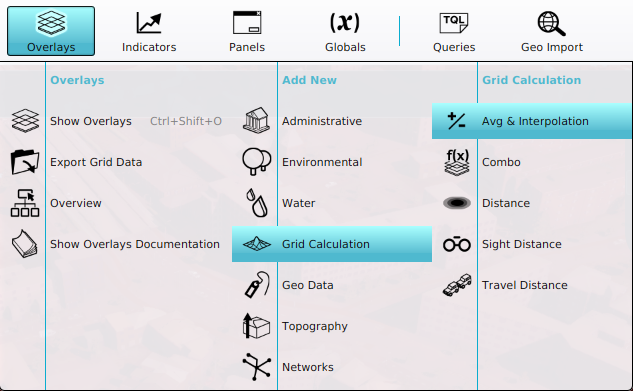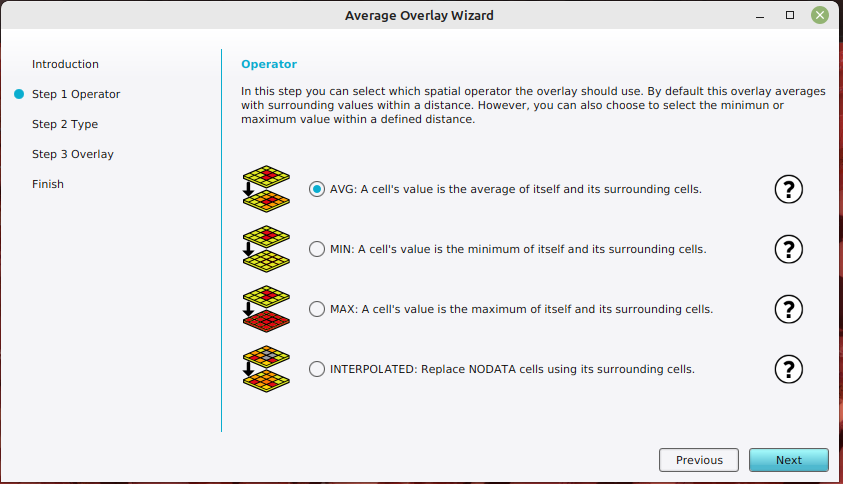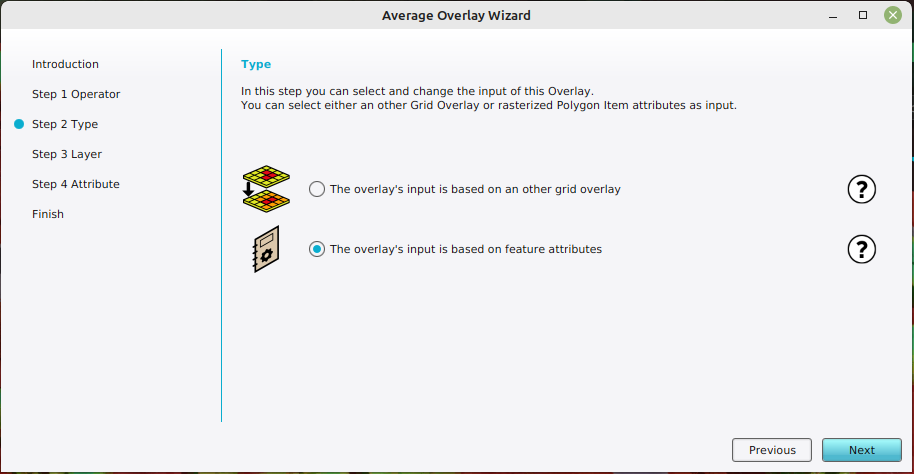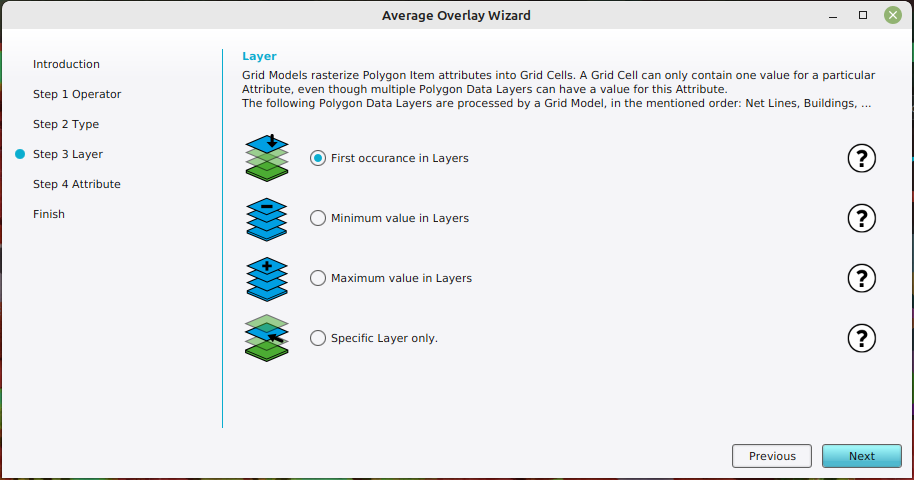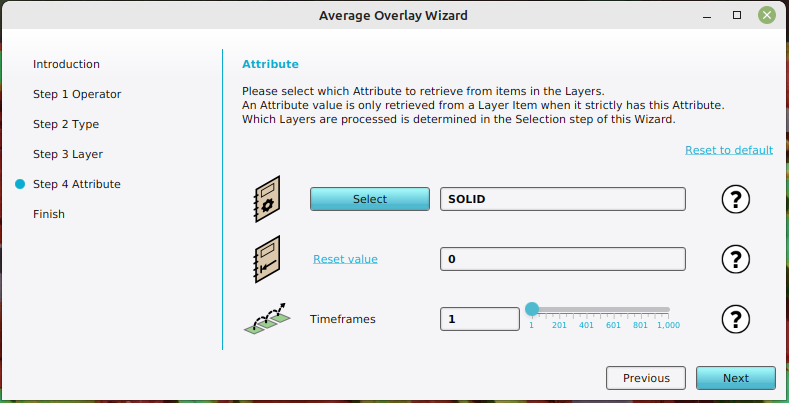How to configure an Average Overlay to gain insight into grid cell values: Difference between revisions
Jump to navigation
Jump to search
No edit summary |
No edit summary |
||
| (4 intermediate revisions by the same user not shown) | |||
| Line 1: | Line 1: | ||
{{Editor location|Overlays}} | {{Editor location|Overlays}} | ||
{{Editor steps|title= | {{Editor steps|title=configure an Average Overlay to gain insight into grid cell values | ||
|Select [[Current Situation]] in the [[ribbon bar]] of the [[editor]]. | |Select [[Current Situation]] in the [[ribbon bar]] of the [[editor]]. | ||
|Hover over [[Overlay]]s, and under ''Grid Calculation'', select ''Avg & Interpolation''. | |Hover over [[Overlay]]s, and under ''Grid Calculation'', select ''Avg & Interpolation''. | ||
| Line 7: | Line 7: | ||
|In the operator step, select the option named ''AVG''. | |In the operator step, select the option named ''AVG''. | ||
|In the type step, select the option named ''The overlay's input is based on feature attributes''. | |In the type step, select the option named ''The overlay's input is based on feature attributes''. | ||
|In the layer step, select the option that is best applicable: when the feature attribute is in multiple layers, select the "First | |In the layer step, select the option that is best applicable: when the feature attribute is in multiple layers, select the "First occurence", "Minimum value" or "Maximum value" option. If the attribute should only be obtained from a specific layer, select the ''Specific Layer only'' option. In that case you also have to select a particular layer, such as [[Building]]s. | ||
| | |In the attribute step, click on the select button to select an attribute that should be rasterized. | ||
|Adjust the averaging distance by selecting the ''Cell averaging distance (m)'' field. | |Optionally adjust the default value in case no features are present at a particular location. | ||
|Click next and close the wizard by clicking on the finish button. | |||
|Adjust the averaging distance to '''0''' by selecting the ''Cell averaging distance (m)'' field. | |||
}} | }} | ||
<br> | <br> | ||
| Line 28: | Line 30: | ||
|seealso= | |seealso= | ||
*[[Average Overlay]] | *[[Average Overlay]] | ||
|howtos= | |||
*[[How to create an Average Overlay based on another Grid Overlay]]. | |||
*[[How to fill NO_DATA values in a grid overlay by interpolation using and Average Overlay]]. | |||
*[[How to create an Average Overlay based on feature attributes]]. | |||
}} | }} | ||
[[Category:How-to's]] | |||
Latest revision as of 13:33, 30 January 2024
How to configure an Average Overlay to gain insight into grid cell values:
- Select Current Situation in the ribbon bar of the editor.
- Hover over Overlays, and under Grid Calculation, select Avg & Interpolation.
- With the Overlay selected, open the Configuration Wizard by clicking on the button in the detail panel.
- Once the wizard is ready, select next.
- In the operator step, select the option named AVG.
- In the type step, select the option named The overlay's input is based on feature attributes.
- In the layer step, select the option that is best applicable: when the feature attribute is in multiple layers, select the "First occurence", "Minimum value" or "Maximum value" option. If the attribute should only be obtained from a specific layer, select the Specific Layer only option. In that case you also have to select a particular layer, such as Buildings.
- In the attribute step, click on the select button to select an attribute that should be rasterized.
- Optionally adjust the default value in case no features are present at a particular location.
- Click next and close the wizard by clicking on the finish button.
- Adjust the averaging distance to 0 by selecting the Cell averaging distance (m) field.
2. Add a new Average Overlay.
Notes
- The layer sequence of first occurrence is defined in Rasterization model.
- In the attribute step, the amount of timeframes can be increated when the attribute is represented by an array of values.
How-to's
- How to create an Average Overlay based on another Grid Overlay.
- How to fill NO_DATA values in a grid overlay by interpolation using and Average Overlay.
- How to create an Average Overlay based on feature attributes.
